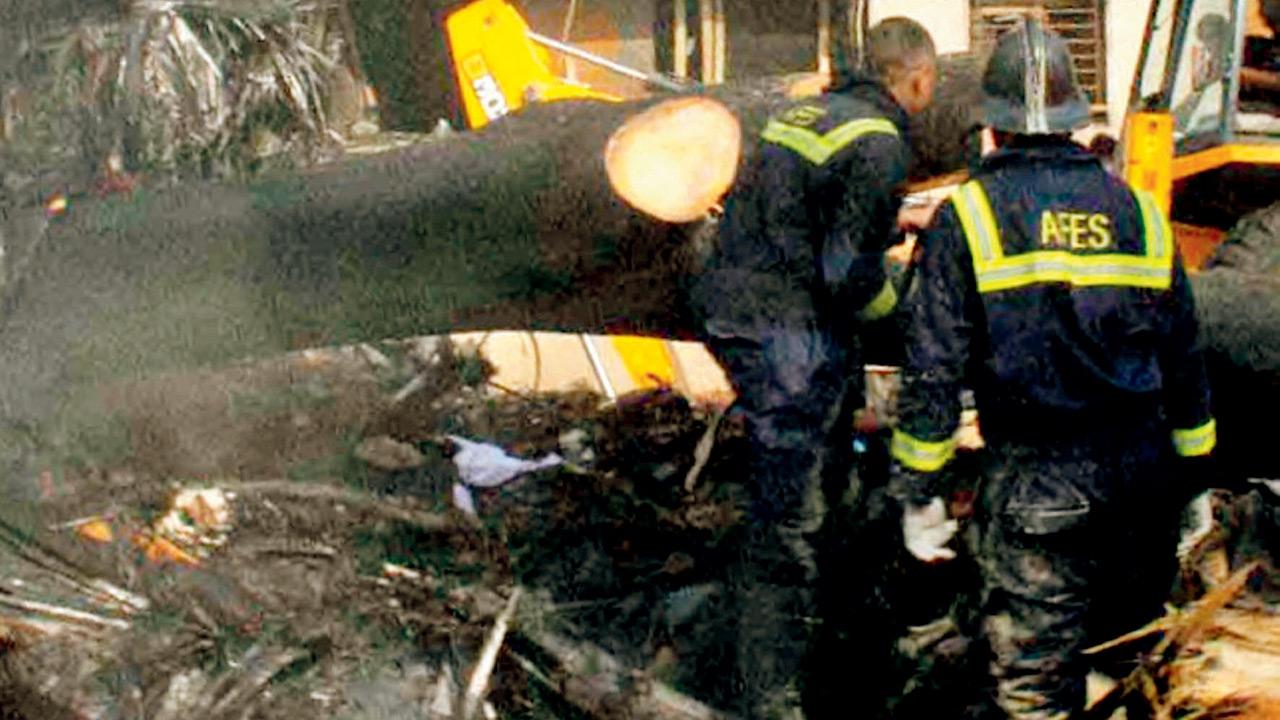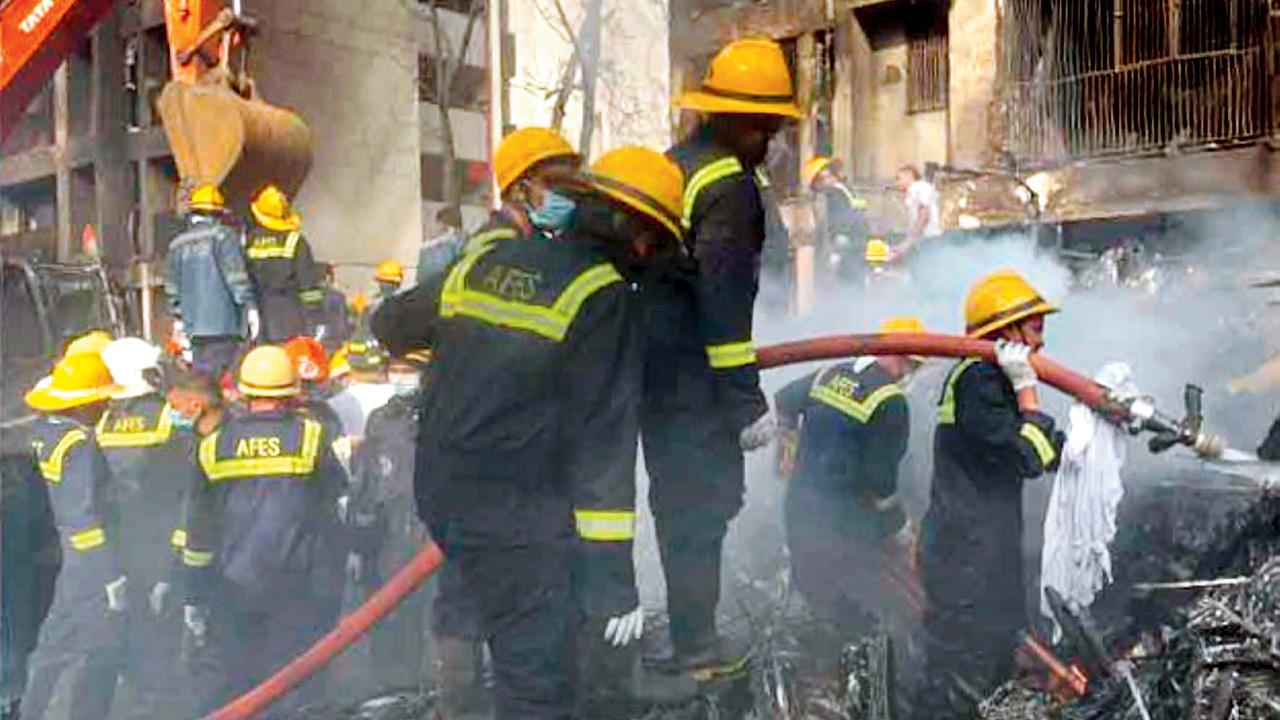Just a week before the tragic June 12 crash, Chief Fire Officer Om Jadeja of the Gandhinagar Fire Station had conducted a training session on how to respond to a plane crash. The session included procedures for extinguishing fires caused by aviation fuel and strategies for passenger rescue

Fire officials at the crash site battling intense heat and wreckage spread across a 900-metre radius. Pics/Nimesh Dave
The Fire Department believes the pilots of Air India flight AI 171 saved thousands of lives by making a critical decision within just 15 seconds — choosing to land the aircraft in an open green zone to minimise casualties. The plane crash occurred within a 900-metre radius surrounded by greenery and four hostel buildings of BJ Medical College in Ahmedabad.
Remarkably, just a week before the tragic June 12 crash, Chief Fire Officer Om Jadeja of the Gandhinagar Fire Station had conducted a training session on how to respond to a plane crash. The session included procedures for extinguishing fires caused by aviation fuel and strategies for passenger rescue.
 Firefighters work alongside multiple agencies in a race against time to rescue victims and recover bodies from the charred remains
Firefighters work alongside multiple agencies in a race against time to rescue victims and recover bodies from the charred remains
Speaking with mid-day, Chief Officer Jadeja said, “The pilots likely knew they wouldn’t survive, but still chose the best possible crash site where the impact would cause the least devastation. The area was largely open and green, with only a few hostel buildings nearby. We surveyed the 900-metre crash zone and concluded that if the plane had crashed just 100 metres ahead, casualties could have been in the thousands due to the proximity to BJ Medical College and Civil Hospital.”
How rescue op was conducted
Chief Fire Officer Jadeja explained, “We received a fire alert call at 1.42 pm on June 12. Our team reached the crash site by 1.53 pm — just 11 minutes later. Initially, the call reported a fire in the BJ Medical College area. Over 500 personnel from various agencies rushed to the scene to rescue victims and extinguish the flames.”
Emergency response teams from the Army, Intelligence Bureau (IB), National Investigation Agency (NIA), Airport Rescue and Fire Fighting (ARFF), Directorate General of Civil Aviation (DGCA), Accident Investigation Bureau (AIB), local police, hospital staff, and the municipal corporation coordinated at the scene.
 Chief Fire Officer Om Jadeja
Chief Fire Officer Om Jadeja
“By the time we arrived, the ARFF team was already attempting to extinguish the fire, but it was extremely difficult due to the intense heat and highly flammable aviation fuel,” Jadeja added.
Fighting flames
“The fire had spread across a 900-metre radius. We had a golden hour to rescue as many people as possible. The aircraft was using aviation gasoline, which is extremely pure and highly flammable. We targeted one section of the wreckage to break through the flames and reach trapped victims,” he said.
“We had already conducted a training session on June 5 about how to handle an aircraft crash. That training helped us understand the aircraft layout — including the location of the black box, economy and business class sections, cockpit, and tail. Our team of 37 firefighters reached the site and discovered that 70 per cent of the passengers were still strapped in their seats,” he added.
“Within the first hour, we managed to retrieve 54 charred bodies, all severely burnt. Over the next several hours, we removed a total of 255 bodies. The intensity of the fire made survival impossible. In the last two days, we also recovered three more bodies, including two children and one cabin crew member,” Jadeja said.
Training proved crucial
Jadeja explained that the June 5 training with 37 fire officers proved essential. Conducted by the ARFF team, it included detailed briefings about aircraft structure and rescue protocols.
 Subscribe today by clicking the link and stay updated with the latest news!" Click here!
Subscribe today by clicking the link and stay updated with the latest news!" Click here!










